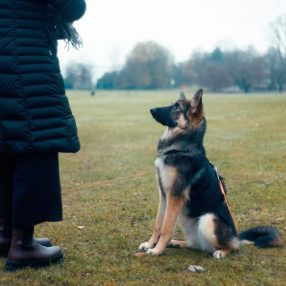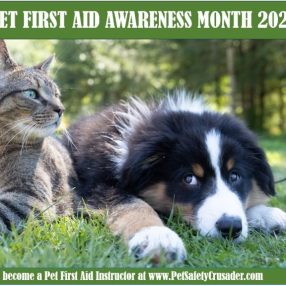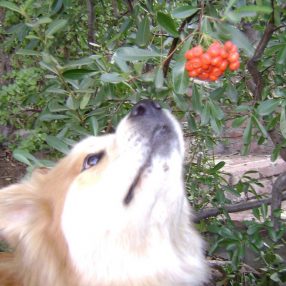
Obesity is a common problem in dogs and is often caused by improper diet. If your dog has a sausage profile, hidden ribs, and big belly, appears winded after minimal movement, wheezes when breathing, and struggles to get up from a lying or sitting position, it could be a sign that it is overweight or obese.
When left untreated, excess weight and obesity could result in severe health complications such as respiratory diseases, osteoarthritis, heart diseases, diabetes, and reduced lifespan, so you should strive to keep your pet in shape. Read on for eight tips to help your pup shed excess pounds and maintain fitness throughout their life.
-
Speak to your veterinarian
The first step to helping your dog lose excess weight is consulting your vet. A veterinarian will help you set a realistic weight loss goal and advise on the best strategies to achieve the ideal weight and condition.
Consulting your vet can also help rule out some medical conditions such as crushing disease or hypothyroidism that could contribute to your furry friend’s excessive weight. Crush syndrome disease is a condition that occurs when your pet’s adrenal glands produce excess cortisol. Cortisol is the hormone responsible for controlling weight and regulating stress responses. Hypothyroidism is a condition caused when your dog’s thyroid glands do not secrete adequate hormones, resulting in slow metabolism, which leads to weight gain.
2. Reduce calorie intake
Consuming a lot of calories results in excessive weight and obesity, so you should consider reducing calorie intake. If you often rely on the feeding guidelines on the canine food bag, you often feed your dog 20% to 30% more calories than they need, especially when you have a neutered, sprayed, or older pet. The food guides are designed for unneutered, unsprayed, or adult active canines.
To determine the number of calories you should feed a typical neutered, inactive, or indoor furry friend each day, determine its weight and divide by 2.2. Next, multiply your answer by 30, then add 70. Alternatively, consult your vet for guidance on the correct number of calories your pooch should consume every day. You can reduce calorie intake further by preventing nibbling on people’s food, including french fries and pizza, to help your furry friend lose weight.
3. Provide healthier treats
Not only are dog treats valuable training aids. It is also fun to watch the excitement they bring. However, you should keep track of the number of treats you provide your canine in a day and their impact on the calorie intake. When allocating the day’s food, ensure you subtract the number of calories in treats to avoid feeding more calories than you should.
You should also swap high-fat, high-calorie dog treats like cheese and biscuits with healthier options like broccoli, raw carrots, cucumbers, green beans, celery, blueberries, bananas, and apples. Alternatively, switch to low-calorie dog treats.
Introducing non-food rewards is also an effective way to help your canine stay in shape. For instance, you could give your pup a belly rub or engage them in a round of fetch instead of using food treats like french fries or pork belly as a reward.
4. Invest in low carb and high protein diets
Most dog owners prefer feeding their dog kibble because it is easy to serve, shelf-stale, and provides excellent nutrition for their canines. However, manufacturers often include a lot of carbohydrates in the dog food, increasing the calorie intake when consumed, leaving your pup with inadequate energy and excessive weight.
To help your dog lose weight, consider investing in high protein, low carbohydrate raw or canned food and kibble. Since proteins require more calories to digest, your canine will likely shed a significant number of pounds.
5. Measure meals
Determining how many calories your furry friend needs each day is not enough. You should further establish how much food the pooch needs per meal. This prevents overfeeding, which leads to excessive weight and obesity. According to the Association for Pet Obesity Prevention study, adding as few as 10 extra tiny kibbles of dog food daily could accumulate up to a pound of weight gain annually for indoor dogs and cats. Instead of feeding your dog one large meal, use a measuring cup to determine correct food portions and provide your pup with two to three light meals daily.
6. Keep your dog hydrated
Your pup will likely turn to food when thirsty, which could add weight. Be sure to watch out for signs of dehydration and top your dog’s bowl with fresh water throughout the day. Other benefits of providing your pup with water include:
- Aiding in the absorption of nutrients and digestion of food
- Moving nutrients into and out of the canine’s body cells
- Providing a cushion for spinal cord and intestinal tissues
- Maintaining optimal body temperatures
- Shinier coat
- Soft skin
7. Keep your dog active
Introducing exercises such as running, walking, playing ball, swimming, or hiking to your furry friend’s daily routine does not only enable them to keep their minds active. Engaging in at least 30 minutes of physical activities also helps your dog burn calories, allowing them to lose weight.
Suppose your puppy is obese or not used to physical activity. In that case, you should consider gradually increasing the exercise the canine receives. For instance, you could start with at least 10 minutes of exercise daily and increase until the pup can engage in 30 minutes of daily activity. This enables your puppy to expend energy, retain lean body mass, and improve metabolic rate.
However, it is worth noting that different dog breeds can handle various physical activities. For this reason, liaise with your breeder or vet to determine the best exercise for your canine. Consulting a vet could also help diagnose medical issues that could inhibit strenuous physical activity.
8. Weigh your canine regularly
Track performance by weighing your dog regularly. This enables you to determine whether your efforts are successful or if you need to develop a new strategy to help your dog shed the extra weight. Contact your vet if you do not notice any changes for professional assistance.
Endnote
While you may want a cuddly, marshmallow canine, excess weight makes them vulnerable to health complications. Reduce your pup’s calorie intake, give healthier treats, invest in high-protein foods, and keep your canine active to help your furry friend lose weight and extend its lifespan.










